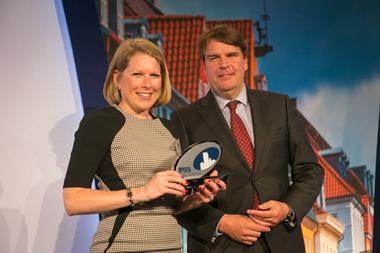Investors at the IP Real Estate Global Conference 2015 questioned whether the trend towards urbanisation would continue in all regions of the world and emphasised the need to be responsive to changes in collective behaviour of city-dwellers.
Speaking on a panel at the conference in Copenhagen, Jim Fetgatter, chief executive at AFIRE, predicted that, although younger people may be moving to cities, these people may want to move out of the cities when they get older and have their own children.
“They may go back to the suburbs,” he said.
Christopher McCormick, European investment director at Gaw Capital Partners, said this trend was already happening.
“People don’t want to be in cities,” he said. “Because the technology has moved on, there’s definitely a movement of people working more from home, in more flexible accommodation.”
Meka Brunel, executive vice-president of Ivanhoé Cambridge, a unit of the Caisse de dépôt et placement du Québec pension fund, said on the other hand that the trend of population movement towards cities was not just about young people.
“It’s about a change of mindset of everybody,” she said. “It’s the end of the era of ‘Desperate Housewives’, wanting to live in the suburbs. It’s much more about being more central. This is really a global change in mentality.”
The panel discussed a perceived decrease in car ownership among urban dwellers and the implications of this for investors.
Brunel said her adult children who lived close to cities and public transport did not own cars but rather hired cars or used car-share arrangements.
“It’s a real change of mentality, and not just the younger generation,” she said. “This is something we have to take into account in the way we look at real estate.”
Property investors spent their time imagining the future, Brunel observed, although today’s environment was very short term because technology changed all the time.
“So the difficulty for us is how to predict and deliver what they expect of us, with what we know today,” she said.
Fetgatter said several residential projects in down-town Washington, DC, had been approved with no parking at all.
Existing parking facilities are now in some cases being changed into residential space because they were not needed any more, he said.
Brunel said one of the main challenges now for real estate investors was to be able to convert their assets into something else.
“The flexibility is the main point, but at the same time it’s very challenging (…) but also very interesting in many ways,” she said.
Focusing on trends relevant to real estate investors within cities, McCormick said it was the migration of talent and creativity that investors had to keep an eye on.
Speaking about developments he has been involved in within London, he said: “Already we’ve moved on. In the last five years, we’re starting to see the artist types, the creative types having to move, say, to Whitechapel (as neighbouring developing areas became more expensive). All of a sudden, they’re starting to look for the next area.”
Meanwhile, Boris van der Gijp, director of strategy and research at Syntrus Achmea Real Estate & Finance, said that, although there was rapid growth in cities, these locations were not necessarily offering investors good opportunities.
“It is about finding the good real estate,” he said.















No comments yet